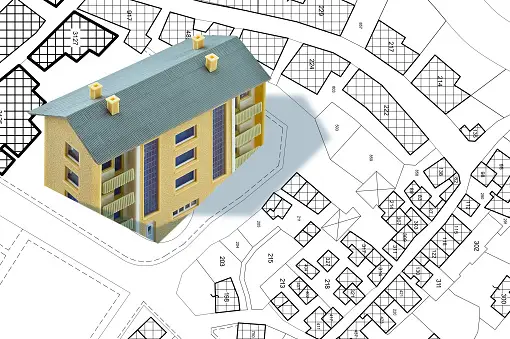Navigating the labyrinth of deed restrictions and zoning laws may seem daunting, but fear not! This article will unravel the intricacies, shedding light on how these legal frameworks shape our communities. So, grab a cup of coffee and join us on a journey through the world of property regulations – it’s more intriguing than you might think!
What Are Deed Restrictions?
Deed restrictions, sometimes colloquially known as “the fine print” in real estate, are not just legal jargon. They serve as the invisible threads that weave the fabric of our neighborhoods. These restrictive covenants are powerful tools that influence how properties are used, developed, and maintained. In this comprehensive exploration, we’ll navigate the intricacies of deed restrictions, shedding light on their multifaceted nature and the profound impact they have on the real estate landscape.
Foundations of Deed Restrictions:
At their core, deed restrictions are contractual agreements embedded within property deeds. These agreements dictate what a property owner can and cannot do with their land. While the idea of restrictions may seem problematic, their purpose is often to maintain a certain standard of living. They also aim to protect property values and cultivate a cohesive community identity.
Diverse Dimensions of Restrictions:
Deed restrictions encompass a broad spectrum of dimensions. These range from architectural guidelines and land use restrictions to regulations on the size/type of structures that can be erected. Architectural guidelines may prescribe the aesthetic elements of a structure, dictating everything from roofing style to the exterior’s color palette. On the other hand, land use restrictions could limit a property’s use to residential purposes only or, conversely, permit a blend of residential and commercial activities.

Preserving Visual Harmony:
One of the primary objectives of deed restrictions is to preserve the visual harmony of a neighborhood. Imagine a streetscape where each house is an architectural marvel, complementing its neighbors and creating an aesthetically pleasing ensemble. These restrictions serve as a collective brushstroke, ensuring the overall visual composition remains cohesive and appealing, enhancing property values and fostering a strong sense of community identity.
Stewardship of Property Values:
Deed restrictions are the unsung guardians of property values. By placing limitations on activities that could adversely affect the desirability of an area, these restrictions maintain a level of quality and desirability. Common stipulations might include guidelines on landscaping upkeep, rules against running certain types of businesses from residential properties, or restrictions on alterations that could detract from the neighborhood’s overall appeal.

Commercial and Mixed-Use Considerations:
Deed restrictions extend beyond residential zones and venture into the realm of commercial and mixed-use developments. Here, they regulate the types of businesses that can operate within a particular area, ensuring compatibility with the surrounding community. A residential neighborhood, for instance, might prohibit the establishment of noisy industrial facilities that could disrupt the tranquility of the area.
Enforcement Dynamics and Legal Implications:
Enforcement of deed restrictions typically falls into the hands of homeowners’ associations (HOAs) or other governing bodies specified in the deed. Violations can carry legal consequences, ranging from fines to potential legal actions compelling compliance. Prospective property owners must be diligent in understanding these restrictions before purchasing a property to avoid unintended legal entanglements and financial repercussions.
Flexibility and Amendments:
While deed restrictions provide a robust framework for property use, they are not immutable. Recognizing the evolving needs of communities, property owners may seek amendments to these restrictions. However, the process is often intricate, requiring the consensus of a significant majority of property owners within the affected community.
In essence, deed restrictions emerge as indispensable instruments for shaping the character and development of communities. They strike a delicate balance between individual property rights and the collective interests of a neighborhood, fostering environments that are visually pleasing, economically stable, and conducive to harmonious living.
Understanding Zoning Laws
In the intricate dance of urban development, zoning laws emerge as the choreographers, orchestrating the harmonious coexistence of diverse land uses. The roots of zoning laws trace back to the early 20th century when the explosive growth of cities necessitated a more organized approach to urban planning. The advent of industrialization brought factories and residential areas into uncomfortably close quarters, prompting the need for regulations that would separate incompatible land uses. Enter zoning laws – a tool crafted to bring order to the chaos of urban expansion.
Zones: The Building Blocks of Regulation

At its core, zoning is the art of categorizing land into distinct zones, each with a unique set of permitted land uses. Residential zones, characterized by the ebb and flow of community life, stand in stark contrast to the vibrant commercial zones pulsating with economic activity. Meanwhile, industrial zones hum with productivity, housing the engines of innovation and production. This zoning mosaic serves as the foundation upon which cities and towns are built, guiding the development of spaces that cater to the diverse needs of their inhabitants.
Guardians of Community Welfare
The raison d’être of zoning laws extends beyond mere spatial organization; it’s a commitment to the welfare of communities. By preventing incompatible land uses from cohabiting, these regulations act as guardians against potential nuisances, ensuring safety and quality of life for residents. Consider the juxtaposition of a bustling factory amidst a tranquil neighborhood or a towering commercial skyscraper overshadowing a suburban backyard – the importance of zoning laws in maintaining harmony becomes evident.
Preservation of Aesthetic Identity
One cannot discuss zoning without acknowledging its profound impact on the visual identity of communities. Zoning laws often encompass guidelines on architectural design, building height, and even landscaping, contributing to the preservation of a region’s aesthetic character. The uniform charm of historic districts and the picturesque allure of residential neighborhoods owe much of their appeal to these regulations, which seek to create visually cohesive environments.

Adaptability in the Face of Change
Zoning laws are not static monoliths; they are dynamic instruments that adapt to the evolving needs of communities. Through amendments and revisions, these regulations accommodate changes in population density, technological advancements, and shifting economic landscapes. This adaptability is crucial for fostering resilient urban environments that can withstand the test of time.
Challenges and Criticisms: The Ongoing Dialogue
As with any complex system, zoning laws are not without their challenges and criticisms. Critics argue that these regulations can perpetuate socioeconomic disparities, limit housing options, and stifle innovation. Striking the delicate balance between regulation and flexibility remains an ongoing challenge urban planners and policymakers face as they navigate the ever-shifting landscape of urban development.
Understanding zoning is not merely deciphering legal jargon; it is grasping the intricate dance between the built environment and the communities that call it home.
Deed Restrictions vs. Zoning Laws: Unraveling the Differences

Historical Context and Evolution Of Legal Frameworks:
To truly comprehend the significance of deed restrictions and zoning laws, we must journey back in time to understand their historical roots. Deed restrictions find their origins in the late 19th and early 20th centuries, coinciding with the rise of planned communities and suburban development. These restrictions emerged as a response to the desire for uniformity and aesthetic cohesion within neighborhoods.
On the other hand, zoning laws trace their lineage to the early 20th century. These laws gained prominence in the wake of industrialization. The rapid urbanization during this period prompted concerns about haphazard development and the coexistence of incompatible land uses. Zoning became a tool to organize urban spaces, strategically delineating residential, commercial, and industrial zones.
Over the years, both deed restrictions and zoning laws have undergone significant legal evolution. These changes have been shaped by changing societal norms, court decisions, and legislative amendments. Deed restrictions, initially focused on maintaining architectural consistency, have expanded to address a broader array of concerns. These new concerns include environmental sustainability and community amenities.
Zoning laws, too, have evolved to reflect contemporary urban planning principles. The shift towards mixed-use developments, transit-oriented design, and sustainable practices has influenced zoning regulations. Modern zoning laws often incorporate elements of smart growth and seek to balance economic, social, and environmental considerations.
Impact On Communities and Contemporary Challenges/Debates:
The impact of deed restrictions and zoning laws on communities is profound and multifaceted. Deed restrictions, by preserving a certain aesthetic and prohibiting specific land uses, contribute to the creation of unique neighborhood identities. They foster a sense of community and shared values among residents. However, challenges may arise when attempting to reconcile individual property rights with the collective vision of a community.
With broader jurisdiction and governmental enforcement, zoning laws help in shaping the overall character of cities/regions. They influence urban density, traffic patterns, and the availability of public spaces. Zoning laws provide a structured approach to land use, but debates often arise regarding the balance between regulation and individual property rights.
In the contemporary landscape, issues surrounding deed restrictions and zoning laws continue to spark debates. Questions of equity and social justice arise as communities grapple with the potentially exclusionary nature of certain restrictions or zoning practices. Striking a balance between the need for organized development and the promotion of inclusivity and diversity remains a complex challenge.
Moreover, technological advancements and changing work patterns introduce new considerations. The rise of remote work, for example, challenges traditional zoning norms as residential areas may now double as workspaces. This dynamic shift prompts a reevaluation of zoning regulations to accommodate evolving societal needs.
Conclusion:
In the tapestry of urban and suburban development, deed restrictions and zoning laws are integral threads, weaving together the intricate fabric of our communities. Understanding their historical roots, legal evolution, and contemporary impact is crucial for policymakers, property owners, and community members alike. As we navigate the complexities of 21st-century living, the interplay between these regulatory frameworks will continue to shape the spaces we inhabit and the communities we call home.
How do zoning laws impact the visual identity of communities?
Zoning laws often encompass guidelines on architectural design, building height, and landscaping, contributing to the preservation of a region’s aesthetic character. They play a crucial role in creating visually cohesive environments, such as historic districts and residential neighborhoods.
What is the adaptability of zoning laws in the face of change?
Zoning laws are not static; they are dynamic instruments that adapt to the evolving needs of communities. Through amendments and revisions, these regulations accommodate changes in population density, technological advancements, and shifting economic landscapes.
What challenges and criticisms do zoning laws face?
Critics argue that zoning laws can perpetuate socio-economic disparities, limit housing options, and stifle innovation. Striking the delicate balance between regulation and flexibility remains an ongoing challenge faced by urban planners and policymakers.
How do deed restrictions and zoning laws interact within a community?
Deed restrictions and zoning laws both influence the development of communities but operate on different scales. Deed restrictions focus on specific properties or developments, addressing aesthetic and usage concerns within a limited scope. Zoning laws apply to broader geographic areas, covering a wide range of factors influencing land use and development. The interplay between these two regulatory frameworks contributes to the overall character of a community.
Other Related Articles:
- How Deed Restrictions Shape Community Development
- The Role of Technology in Enforcing and Managing Deed Restrictions
- The Connection Between Texas Property Deeds and Property Taxes
- Own Your Piece of Texas: Mastering Property Deeds!
- What are My Rights If My Name Is not On a Deed But I’m Married in Texas?
- Does it Matter Whose Name is on Title or Deed of Property in a Divorce in Texas?
- Navigating the Complexities of House Bill 614
- New DEI Challenges For Texas Colleges: Post Senate Bill 17
- What You Need to Know About Divorce During Pregnancy in Texas
- Divorce and Child Custody: What You Need to Know
Oluwatukesi Joseph is a Content Writer at LOBF. He holds a Master’s Degree from Obafemi Awolowo University in Architecture, However, his love for writing and content creation has transitioned him into the writing and content marketing field. He has gained relevant certification from other notable Universities where he developed a strong foundation in content marketing and writing.
Outside of work, Joseph enjoys spending quality time with friends and family and playing chess, which he finds often complements his professional pursuits. Joseph is excited to be part of the dynamic team at The Law Office of Bryan Fagan, contributing his expertise to spreading the good news of LOBF to Families across Texas.




